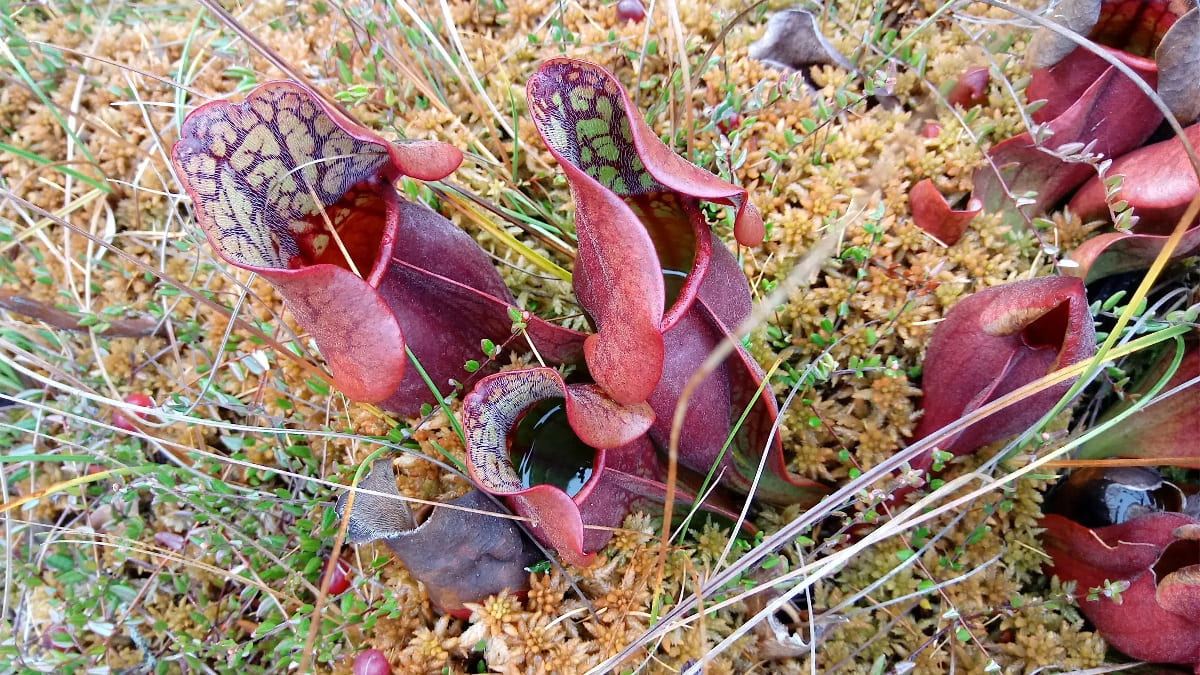Mystery Of Georgia’s Floating Pitcher Plant Bogs

Have you ever heard of Georgia's floating pitcher plant bogs? These unique wetlands are home to some of the most fascinating plants you'll ever see. Imagine a place where carnivorous plants thrive, floating on mats of sphagnum moss. These bogs are not just a sight to behold; they play a crucial role in the ecosystem. They help filter water, provide habitat for rare species, and offer a glimpse into a world where plants eat insects. If you're a nature lover or just curious about unusual plants, Georgia's floating pitcher plant bogs should be on your must-visit list.
Georgia's Floating Pitcher Plant Bogs: A Hidden Gem
Georgia's floating pitcher plant bogs are a rare sight. These unique ecosystems float on water, creating a magical landscape. Let's explore some of the best spots to witness these natural wonders.
Okefenokee Swamp
The Okefenokee Swamp is a vast, mysterious wetland. It's home to diverse wildlife and floating pitcher plant bogs. Here are some highlights:
Chesser Island Boardwalk: This boardwalk offers a close-up view of the swamp's unique flora and fauna. Keep an eye out for pitcher plants floating on the water's surface.
Stephen C. Foster State Park: This park provides access to the western part of the swamp. Rent a canoe to paddle through the bogs and see pitcher plants up close.
Suwannee Canal Recreation Area: This area offers boat tours that take you deep into the swamp. You'll have a chance to see floating pitcher plants and other rare species.
Banks Lake National Wildlife Refuge
Banks Lake is another great spot to see floating pitcher plant bogs. This refuge is a haven for birdwatchers and nature lovers. Here are some must-visit locations:
Banks Lake Boat Ramp: Launch a kayak or canoe from here to explore the lake's floating bogs. The calm waters make it easy to spot pitcher plants.
Observation Deck: This deck provides a panoramic view of the lake and its floating bogs. Bring binoculars to get a closer look at the pitcher plants.
Nature Trails: Several trails wind through the refuge, offering glimpses of the floating bogs. These trails are perfect for a leisurely hike.
Grand Bay Wildlife Management Area
Grand Bay is a lesser-known gem in Georgia. Its floating pitcher plant bogs are a sight to behold. Here are some top spots to visit:
Grand Bay Boardwalk: This boardwalk takes you through the heart of the wetland. Look for pitcher plants floating among the lily pads.
Observation Tower: Climb the tower for a bird's-eye view of the floating bogs. The tower offers a unique perspective on the landscape.
Canoe Trails: Paddle through the wetland on designated canoe trails. These trails provide an intimate look at the floating pitcher plant bogs.
Reed Bingham State Park
Reed Bingham State Park is known for its diverse ecosystems. The park's floating pitcher plant bogs are a highlight. Here are some places to explore:
Reed Bingham Lake: Rent a boat to explore the lake's floating bogs. The pitcher plants here are particularly vibrant.
Birdwatching Platforms: These platforms offer great views of the lake and its floating bogs. They're also excellent spots for birdwatching.
Nature Center: The park's nature center provides information about the local flora and fauna. Learn more about the pitcher plants before heading out to see them.
Conclusion
Georgia's floating pitcher plant bogs are a natural wonder worth exploring. From the Okefenokee Swamp to Reed Bingham State Park, these unique ecosystems offer a glimpse into the beauty of nature. Pack your bags and get ready to discover these hidden gems.
The Enchantment of Georgia's Floating Pitcher Plant Bogs
Georgia's floating pitcher plant bogs are a hidden gem worth exploring. These unique ecosystems offer a glimpse into the fascinating world of carnivorous plants. The bogs are home to the Sarracenia species, which have adapted to thrive in nutrient-poor environments by trapping and digesting insects. Visiting these bogs provides an opportunity to witness nature's ingenuity firsthand.
The Okefenokee Swamp and Doerun Pitcherplant Bog Natural Area are prime locations to see these plants in their natural habitat. Both spots offer a serene escape into nature, perfect for anyone interested in botany or simply looking to enjoy the outdoors.
Remember to respect these delicate ecosystems by staying on designated paths and not disturbing the plants. A trip to Georgia's floating pitcher plant bogs promises an unforgettable experience filled with natural beauty and wonder.

